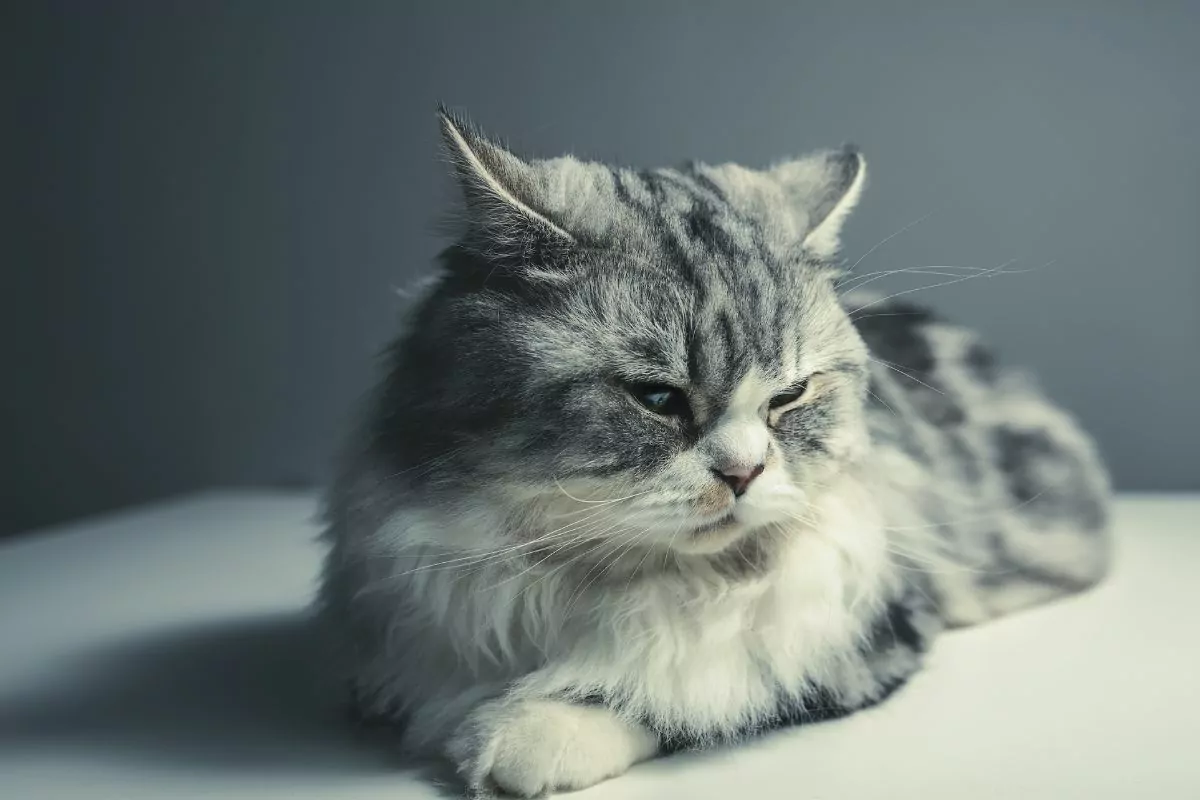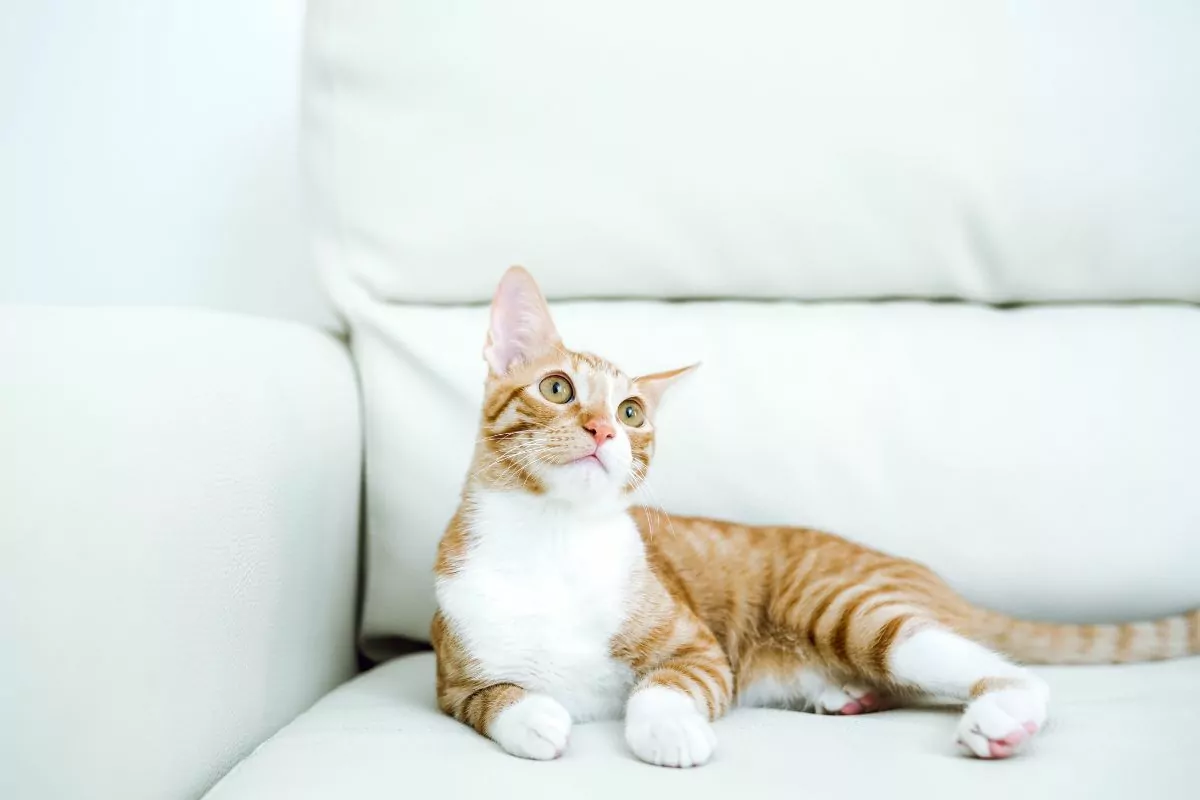Kidney Stones in Cats
Urinary tract issues in cats often create frustrations for owners, but when it comes to kidney stones in cats – it’s usually a hard pass. The kidneys connect to the bladder via two slender ureters. The bladder connects to the urethra, which is very narrow in male cats, and excretes accumulated urine.
The unique anatomy of cats’ urinary tracts places them in a high-risk category for blockages, which can be life-threatening if left untreated.

Kidney Stones in Cats Symptoms
Cats are creatures of habit, which is the only helpful character trait that helps detect early illness through their stoic nature. Cat kidney stones have subtle symptoms, so owners must keep an eye on their cat’s litter tray habits.
The signs and symptoms of kidney stones could include:
- Cats expressing inappropriate urination habits outside the litter tray or in front of the owner.
- Listlessness.
- Depressed appetite.
- Fever.
- Abdominal discomfort when being picked up or petted.
- Traces of blood in the urine (hematuria).
- Intermittent bouts of vomiting.
- Cats suffering from repeated urinary tract infections.
- Frequent, painful urination attempts that only produce small amounts of urine.
- Weight loss.
The Different Types of Feline Kidney Stones
Two minerals occur naturally in cats’ bodies that have the potential to form uroliths. Struvite (also known as magnesium ammonium phosphate) or calcium oxalate are the two most common uroliths. Kidney stones are almost always calcium oxalate.
Kidney stones form when the concentration of the mineral exceeds a certain threshold resulting in crystal formation. The crystals accumulate and form a stone over time.
Calcium oxalate (CaOx) is a burdensome stone to prevent as its formation factors are not entirely understood. Avoidance of CaOx supersaturation is necessary to prevent CaOx stones. Cats have a high risk of developing stones if they have hypercalciuria, hyperoxaluria, hyper aciduria, hypocitraturia, and highly concentrated urine.
What Causes Kidney Stones in Cats?
The kidneys filter metabolic waste products such as urea, mineral salts, and toxins. Cats are predisposed to forming uroliths (stones of the urinary tract) because their urine is highly acidic and very concentrated.
The formation of kidney stones follows an unclear process, but as excess minerals accumulate and form crystals, the crystals accumulate and form a stone. The stone increases in size over weeks or months.
Potential causes of cat kidney stones include:
- Diets or supplements that cause alkaline urine.
- Lack of activity.
- Kidney or bladder infections.
- High blood or urine calcium levels secondary to an underlying condition.
- Genetic predisposition or defects.
- Dehydration or extended periods of water deprivation.
- Urinary retention due to intimidation or stress from resource shortages.
- Certain concurrent illnesses or underlying conditions.
For any cat, crystals in urine cause significant discomfort and may lead to urethral plugs forming from inflammatory cells, blood, and mucous. Crystals in male cats pose a higher risk of blockage due to the narrowness of their urethra anatomy. Crystalluria only occurs in about ten percent of cats with struvite stones.
A cat straining and not producing urine becomes a medical emergency, so monitor your cat’s litter box daily if they seem unwell.
Diagnosing Feline Kidney Stones
Most kidney stones are incidental findings, but a veterinarian starts with a complete medical history and physical exam if a cat shows urinary tract-related symptoms. If indicated, the attending vet requests blood tests, a urinalysis, radiographs, and ultrasounds.
A full medical history offers valuable information about a pet’s water intake, behavioral changes, stressors, multicat household dynamics, litter tray habits, and nutrition. Owners must be familiar with changes in their pet’s body weight, appetite, previous illnesses, or medications.
Radiographs and ultrasound are the best modalities to diagnose kidney stones. The urine sample collected determines specific gravity (concentration), pH, proteins, blood, or the presence of creatine. Urine sediment gets examined for red and white blood cells, bacteria, crystals, and renal casts.
How to Dissolve Feline Kidney Stones
The potential to dissolve a kidney stone depends on the type, size, and location of the stone. Calcium oxalate stones do not dissolve, but if the stone is a struvite stone, a change in diet can aid in dissolving the stone.
Feline struvite stones can be dissolved in one to three weeks using dry and canned prescription diets. The key is ensuring strict diet adherence to achieve complete dissolution.
Listed below is the protocol for dissolving feline struvite uroliths:
- Measure the approximate size of the stones on the ultrasound exam or radiograph to have a reference for comparison.
- Remove all sources of food that are not a prescription diet and monitor your cat’s food and water intake. Ensure that the cat has ample access to fresh water.
- After two to three weeks, repeat the measurement either with the ultrasound or radiographs and note any changes. If the stone is smaller, continue with the prescription food until the stone completely dissolves.
- If the stone has not dissolved completely, it may not be a struvite stone.
Some reasons a stone may not dissolve; include a urease urinary tract infection, non-compliance with a prescription diet, or a combination stone made up of struvite and calcium oxalate particles.
If the cat is not eating the prescription food, discuss alternative flavor options or a different brand with your attending veterinarian.

How to Treat Kidney Stones in Cats
The treatment of kidney stones depends on the type of stone and its location. If your cat has become acutely ill, the treatment will need to be intensive, but if the condition is not life-threatening, there are a few more options.
Medical Treatment
Cats that are blocked or dehydrated will need to be admitted and placed on fluid therapy. Vets will monitor urine output closely, and the cat may need urinary catheterization if there is an obstruction. If indicated, patients receive antibiotics and pain medication as well.
CaOx stones cannot dissolve, so medical management post removal is essential. Potassium citrate is an option to try and alkalinize the urine to a pH of between 7 and 7.5.
Surgical Treatment
A surgical approach to kidney stones applies in cases where the stone is causing significant damage to the kidney through an obstruction resulting in a condition known as hydronephrosis. This condition is considered a medical emergency. Another reason for surgery is recurrent urinary tract infections.
The surgery is complex, and there is a risk of renal damage or infection even if the surgery is performed successfully by a skilled surgeon. An incision is made into the kidney parenchyma to remove the stone and then sutured together again.
If the stone can be dislodged or broken apart by extracorporeal shock wave lithotripsy (ESWL), this is a better option for treatment. It is less invasive but very costly and not widely available.
There is also a risk that if the passed kidney stones in cats remain in the bladder, they cannot travel through the urethra. Feline kidneys are sensitive to shock-wave-induced renal injury, which may lead to post-operatively complications.
A cystotomy in cats is a less risky procedure, and removing the stones from the bladder is easier than from the kidney.
The attending vet sends the stone away for analysis at the Minnesota Urolith Center. The center has analyzed samples from over 1.4 million patients since its establishment in 1981. The composition of the stone is analyzed to determine the correct treatment course and nutritional regime.
The Urolith Center services 45,000 clinics in 103 countries worldwide. The result turnaround time is as fast as eight days.
Nutritional Treatment
Once a cat develops uroliths, they have a high risk of recurring, so a prescription diet is crucial to ensure that urine mineral concentration and pH stay controlled.
Homeopathic remedies for kidney stones in cats include the promotion of water intake through cat water fountains that circulate fresh water, ample wet food, or low sodium tuna or chicken broth. These adjustments help prevent crystals from forming.
Kidney Stones in Cats – Surgery Costs
Surgery to remove renal stones depends on the severity and chronicity of renal impairment as well as the urgency of surgery.
Patients may need pre-operative care, blood tests, fluid therapy, and hospitalization prior to surgery. Surgery and post-operative care costs range from $100 to $5,000.
Managing Feline Kidney Stones
A cat diagnosed with a kidney stone needs close monitoring and regular vet visits. Owners must report any signs of kidney colic like abdominal pain, lethargy, or vomiting to their attending vet. An emergency medical situation may develop from symptoms like straining or lack of urine production; this may occur if the cat becomes blocked.
Cats with oxalate crystals need a prescription diet to slow the growth of the stone by reducing the minerals that form crystals. Struvite stones dissolve over time, but owners must stick with the food to avoid recurrence.
Routine visits to the vet for blood tests, urinalysis, and ultrasound exams or x-rays are necessary to detect complications early. Prevention strategies need constant adjustment and assessment to evaluate the effectiveness and quality of your pet’s overall health.

In Conclusion …
Cats develop kidney stones for several reasons, which can be tricky to treat. Preventing kidney stones from forming is the best way to avoid costly vet visits and chronic medication. Ensure your cats have ample access to litter trays, fresh water and that their diet consists of at least 50% wet food.
Calcium oxalate urolith removal does not prevent its recurrence. The goal of avoiding CaOx stones is to minimize the regrowth and frequency of recurrence. Dietary management focuses on decreasing calcium and oxalate concentrations in the urine.
If your cat already has a kidney stone but is asymptomatic, then be sure to monitor their weight, appetite, and litter tray habits closely to ensure early invention in case the stones cause any complications. Read our article and find out Everything You Need To Know About Cat Kidney Diseases.
